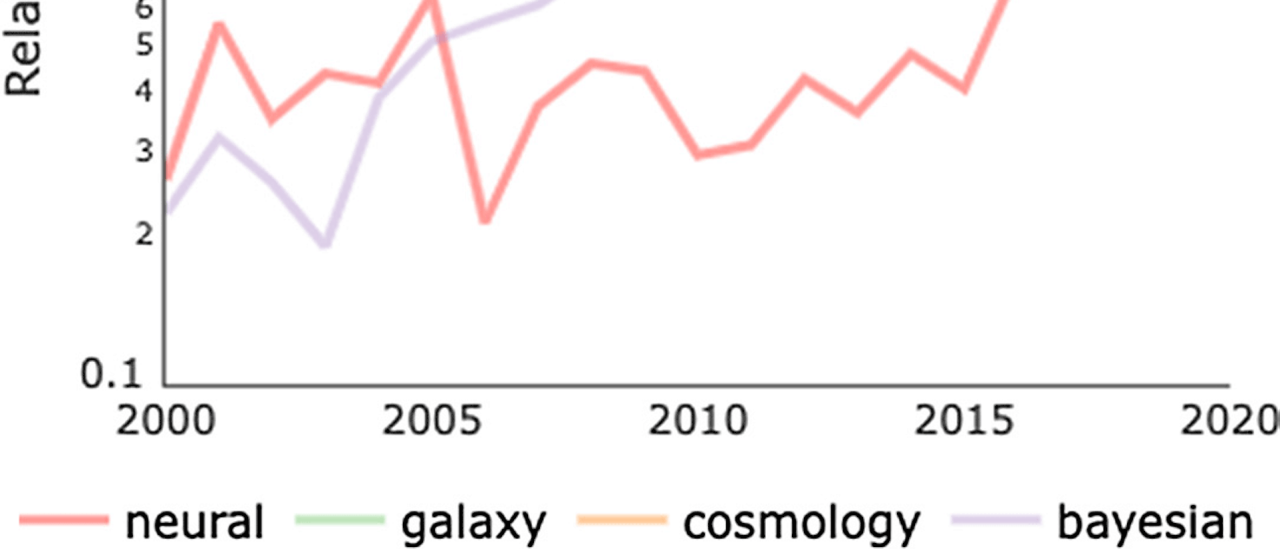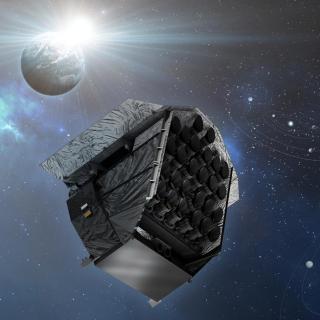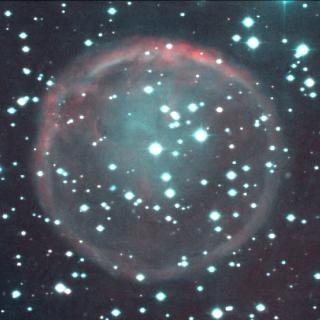Relative change of the number of papers on arXiv:astro-ph with different keywords in the abstract as a function of time. The number of works mentioning neural networks in the abstract has experienced an unprecedented growth in the last ∼ 6 years, significantly steeper than other topic in astrophysics. Source: ArXivSorter
The amount and complexity of data delivered by modern galaxy surveys has been steadily increasing over the past years. New facilities will soon provide imaging and spectra of hundreds of millions of galaxies. Extracting coherent scientific information from these large and multi-modal data sets remains an open issue for the community and data-driven approaches such as deep learning have rapidly emerged as a potentially powerful solution to some long lasting challenges. This enthusiasm is reflected in an unprecedented exponential growth of publications using neural networks, which have gone from a handful of works in 2015 to an average of one paper per week in 2021 in the area of galaxy surveys. Half a decade after the first published work in astronomy mentioning deep learning, and shortly before new big data sets such as Euclid and LSST start becoming available, we believe it is timely to review what has been the real impact of this new technology in the field and its potential to solve key challenges raised by the size and complexity of the new datasets.
The purpose of this review is thus two-fold. We first aim at summarising, in a common document, the main applications of deep learning for galaxy surveys that have emerged so far. We then extract the major achievements and lessons learned and highlight key open questions and limitations which, in our opinion, will require particular attention in the coming years. Overall, state-of-the-art deep learning methods are rapidly adopted by the astronomical community, reflecting a democratisation of these methods. This review shows that the majority of works using deep learning up to date are oriented to computer vision tasks (e.g. classification, segmentation). This is also the domain of application where deep learning has brought the most important breakthroughs so far. However, we also report that the applications are becoming more diverse and deep learning is used for estimating galaxy properties, identifying outliers or constraining the cosmological model. Most of these works remain at the exploratory level though which could partially explain the limited impact in terms of citations. Some common challenges will most likely need to be addressed before moving to the next phase of massive deployment of deep learning in the processing of future surveys; for example, uncertainty quantification, interpretability, data labelling and domain shift issues from training with simulations, which constitutes a common practice in astronomy.



